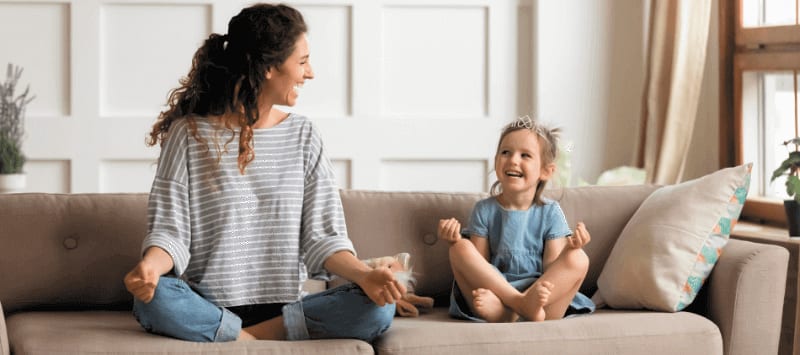Like with most things in life, however, being mindful is always easier said than done. As mentioned, our brains have a tendency to wander – sometimes to the point of obsession. Have you ever been caught in a never-ending marathon of irrational thoughts playing over and over again in your brain? Unfortunately, shutting these thoughts down isn’t always as easy as flicking a switch. And if it’s that hard for us to ‘disengage’, we can only imagine how hard it is for our children.
As adults, we can rationalise and work through difficult emotions. Our little ones can’t do this with such a clear head, and tend to get overloaded, overwhelmed, and confused instead… which results in tantrums and tears rather than a positive emotional learning experience.
By introducing mindfulness practice into your home, staying grounded should become a little easier for both you and your children. Not to mention, it can help regulate emotions and provide cognitive focus. So what’s stopping you? Equip yourself and your little ones with all the tools they need to navigate their thoughts and ultimately achieve stasis.
How do you introduce your family to mindfulness?
Now that you understand the ins and outs of mindfulness a little better, here’s how you can introduce mindfulness into your family’s life.
Just breathe
Mindfulness and meditation go hand-in-hand, like salt and pepper or ham and cheese. Meditation is a whole-body experience. Understanding the mind-body connection will help to bring you a true sense of gravity and weightlessness.
Try lying on your back somewhere comfortable such as your sofa or bed. Close your eyes and simply focus on your breathing. With every breath in, focus on your lungs filling up with air. With any breath out, focus on your lungs decompressing. Try to shut out all other thoughts for five or ten minutes.
If you need a little helping hand, there are plenty of free resources for guided meditation. Try YouTube or, if you really want to master the art of meditation, try downloading the Balance app. Balance works with you to tailor your perfect mediation techniques, finding what works best for you. You can currently get a 1-year subscription for free.
When it comes to children, lying still can be difficult at the best of times. Let alone lying still and focusing on breathing. Make it as simple as possible by grabbing their favourite toy or stuffed animal. Place it on their stomach as they lie on their back. As they breathe in and out, encourage your child to focus on the rise and fall of their new breathing pal. This will help them to not only visualise, but also gain a sense of control over their internal experiences.
Whatever the weather
An important part of mindfulness practice is recognising your thoughts and feelings, and learning how to manage and regulate them. For children, of course, this can be tricky. You could try asking your children to make links between their thoughts and feelings to the weather. Sounds odd, but hear us out!



